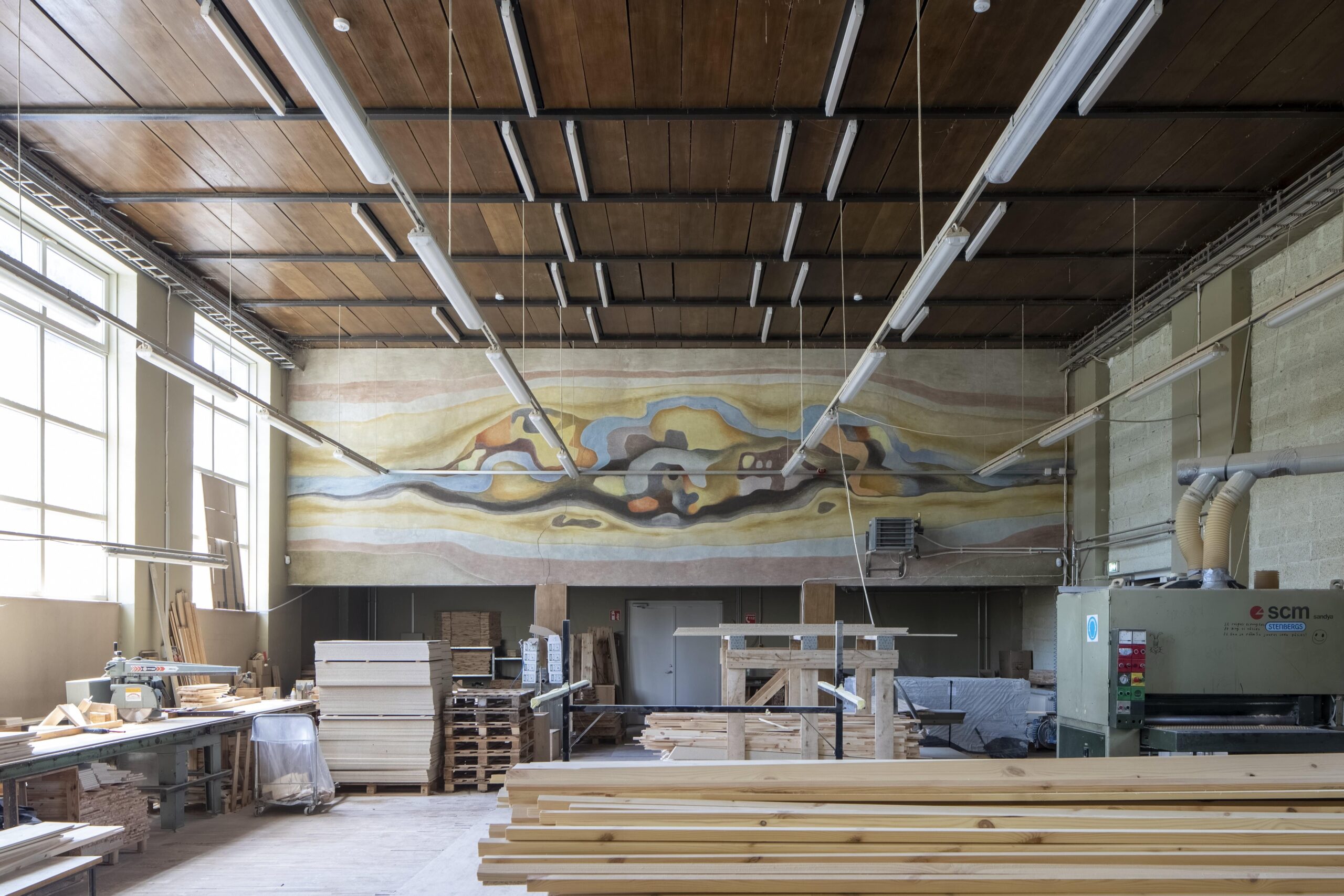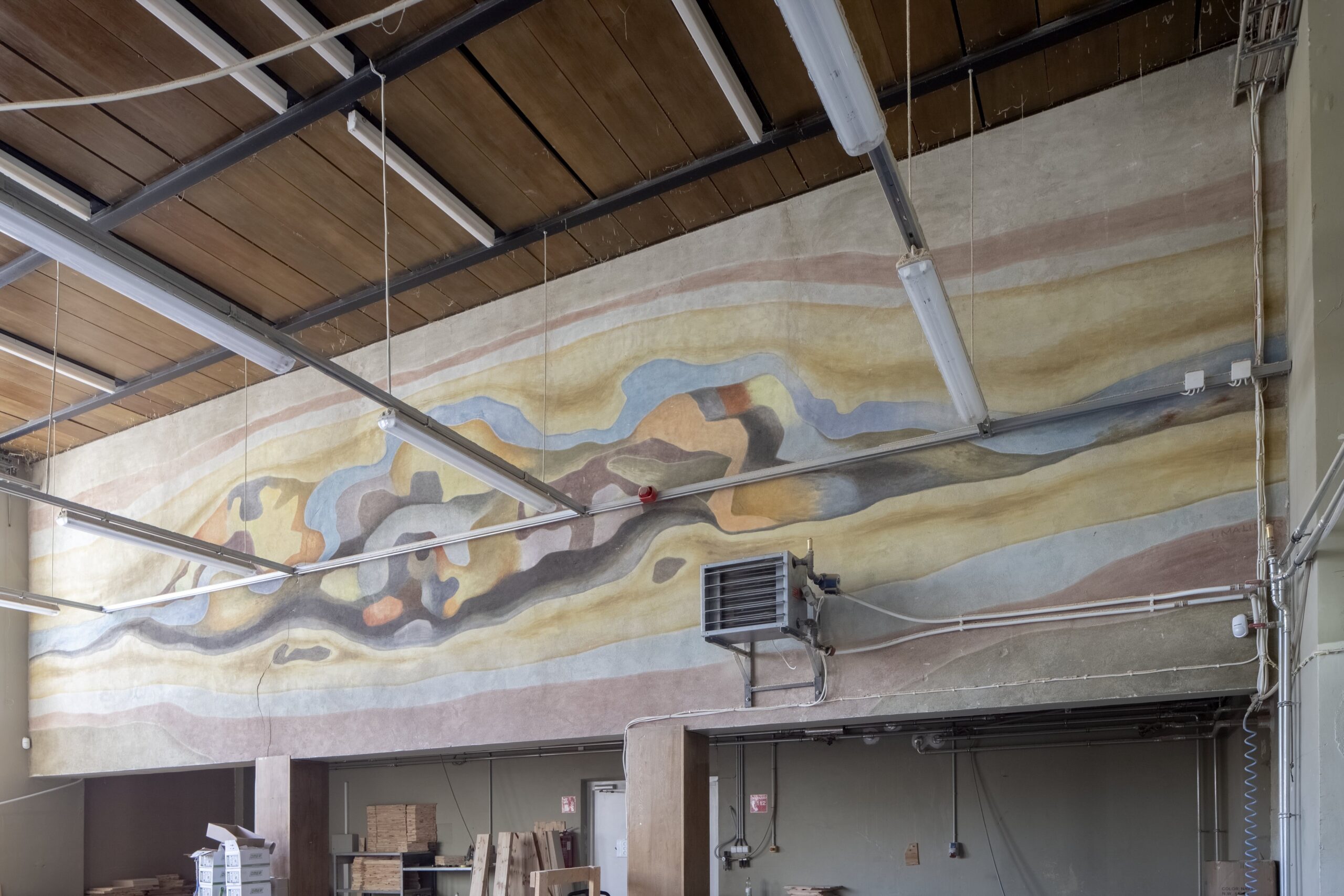Mural Abstraktne kompositsioon (“Abstract Composition”) in the Auditorium of the Rapla Road Administration
Year of completion: 1973
Address: Rapla County, Rapla, Viljandi mnt 94
Author Ilmar Malin
Secco
Not under conservation as a cultural monument
My father went to work in Rapla in May of 1973. I wanted to go with him, but school was in session, which is why I went there in June. The job was finished, broadly speaking. Only a few scaffoldings were still standing – most had already been removed. I asked my father what I was looking at. He said: “Well look for yourself. An abstract composition. Does the structure remind you of anything?” – “It does, that background in the school building on Vanemuise Street has a similar one, wider in the middle and narrowing on the sides.” – “Exactly. Especially the colours of the middle part of that Vanemuise-piece are here too. I actually wanted to create this piece as a fresco. I wanted to try the fresco technique, just once in my life. But it is so physically demanding, I had to abandon the idea.” – “What is a fresco then? What do you mean it’s demanding?” – “A fresco is a painting done on damp plaster with colours mixed on the spot out of earth pigments. It’s not that the plaster dries up right away but the image should be finished on the fresh plaster in one day. Later corrections are not really allowed. Well, I guess they’re allowed, but then it’s not really a fresco. After that heart disease [my father had a heart attack in 1972] I don’t have the power to rush in the way that a fresco would require.” After my father’s death I found a large amount of various coloured earth pigments in his atelier. I guess they’re probably from that time. – “And how did you make the painting THIS time? Like, with what technique and…” – “This is also in a traditional technique, but in a slightly easier one. It’s called a secco. It’s more or less the same, only it is painted on dry plaster instead of damp. I think most murals in Estonia are seccos. I think I’m done for today. I promised you at home that we would visit Andres Ehin and Ly Seppel who live here in Rapla.” – “Are they far?” – “I’m not sure but Rapla is small enough that they can’t be too far.”
Many of the monumental artworks created during the Soviet Era have either been completely destroyed (e.g. Ilmar Kruusamäe and Peeter Allik’s piece in the ale-restaurant Humal), or their context has been altered so much so, that the artwork could have technically survived (e.g. Elmar Kits’s mural in the former restaurant Tarvas) but in reality, the case is different. It is not important that Elmar Kits’s pannel and Ilmar Malin’s series of paintings Lehed ajas (“Papers in Time”, created for the newspaper Edasi/Postimees fireplace room in Tartu), for example, are stored in the repositories of the Estonian National Museum and are therefore preserved. If the location that housed the artwork no longer exists along with its interior, then it is a case of an artwork’s (contextual) destruction. The piece discussed here, located in Rapla, has survived but its condition is not great. Because holes have been made in the artwork’s surface (it is on a plaster wall, after all), and a lighting fixture has been mounted there. It is a shame when pieces initially created for the public are located in an essentially closed-off space. A similar interpretation should be considered regarding the fact that – as far as I know – a coffin factory now operates in the hall of the Rapla Road Administration.
Jaan Malin









